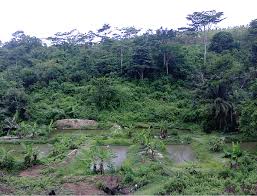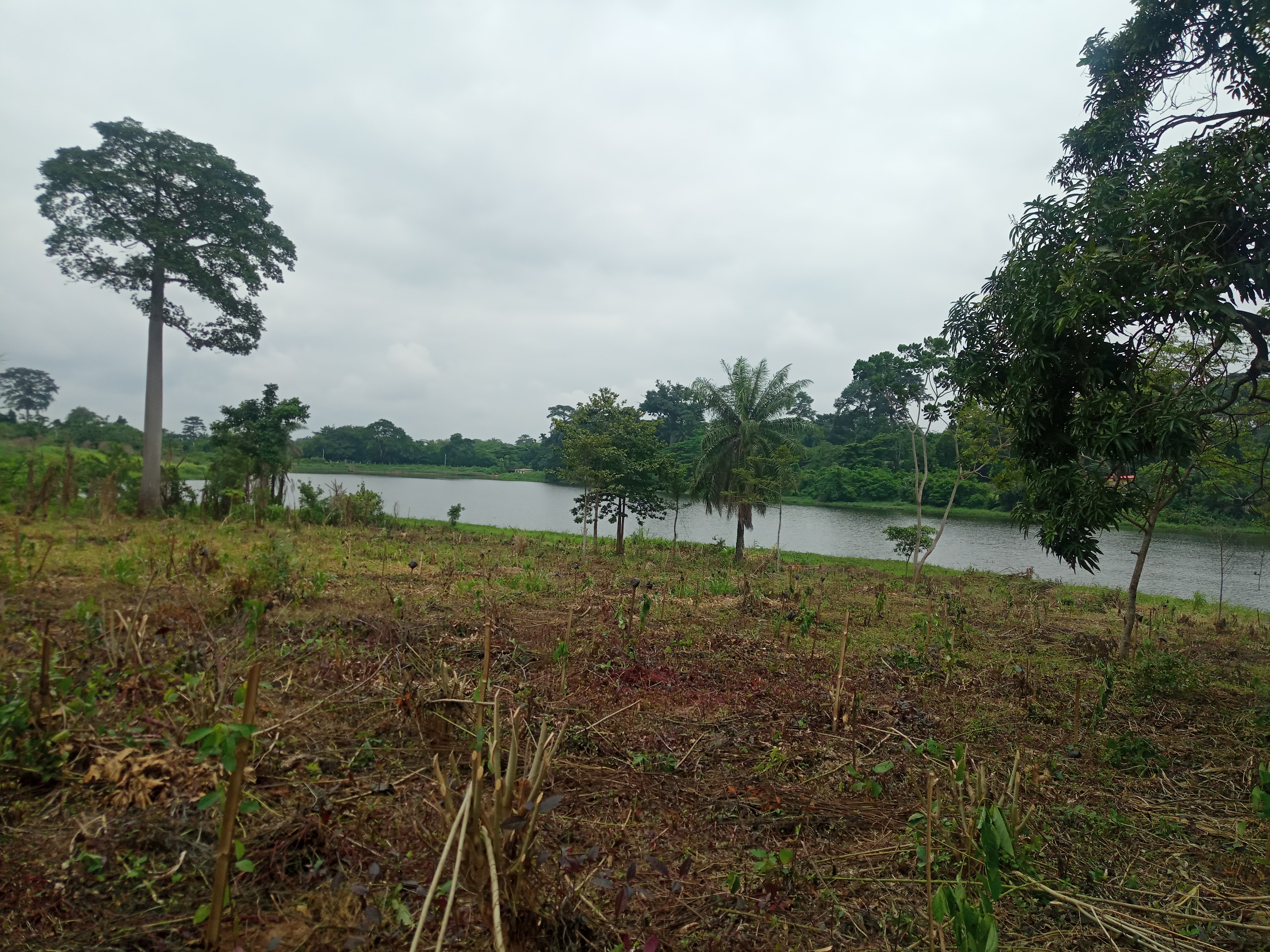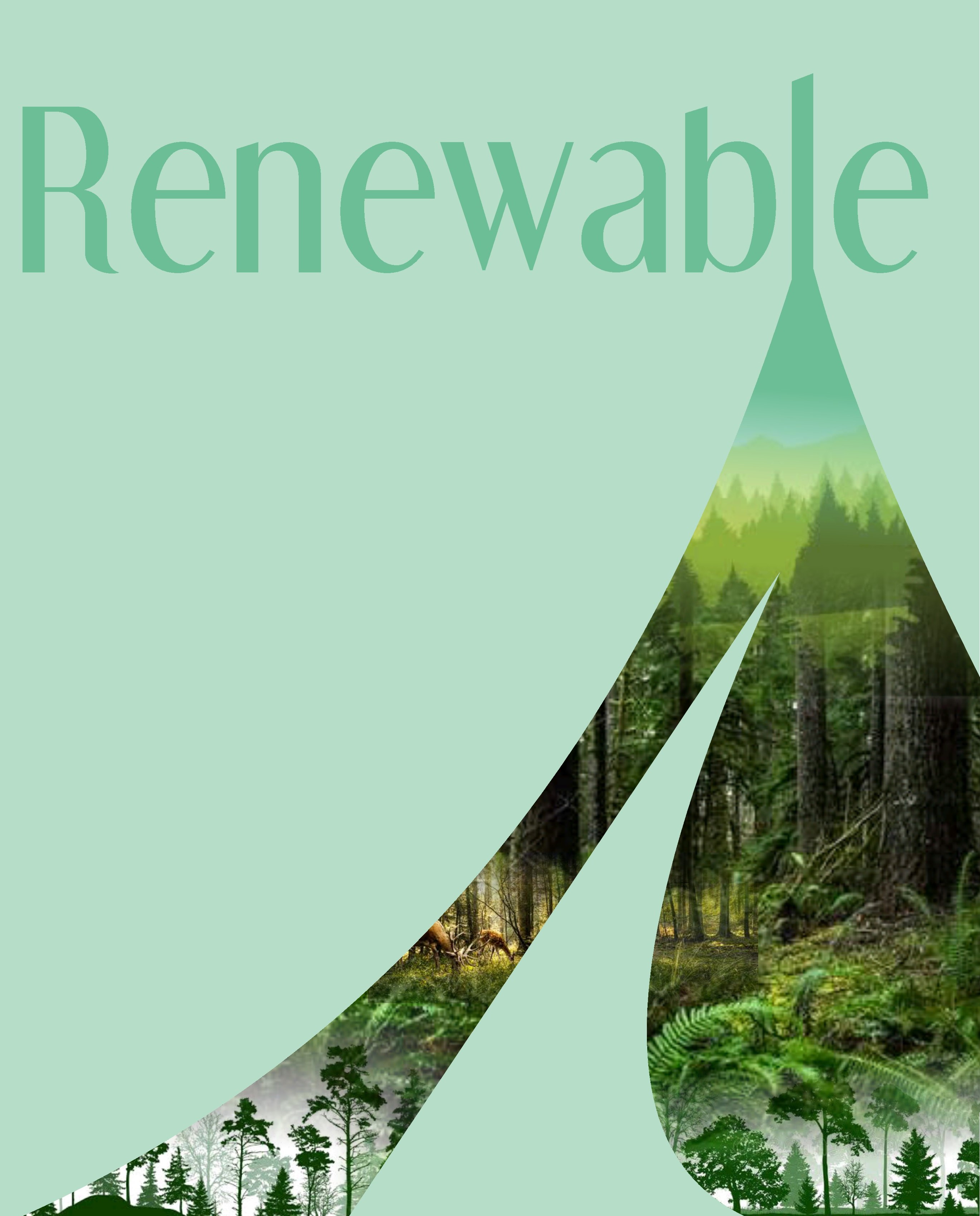Archives
-
Volume 5 Online
Vol. 5 No. 1 (2025) -

RENEWABLE
Vol. 1 No. 1 (2021)RENEWABLE covers production, management, products, biotechnology, socio-economics, extension, health, physiology, nutrition, genetics, reproduction, farming systems;and man-flora-fauna interactions in relation to sustainable management of renewable natural resources.
-

RENEWABLE Second Volume
Vol. 2 No. 1 (2022)The Journal, RENEWABLE - is an official publication of the Faculty of Renewable Natural Resources, University of Ibadan; that is published twice (June and December) a year in one volume. The Journal publishes carefully peer-reviewed original research articles on various aspects of renewable natural resources, forestry, environment, aquaculture, wildlife, ecotourism, and fisheries management. It covers diverse areas such as production, management, products, biotechnology, socio-economics, extension, health, physiology, nutrition, feeds and feedstuff, breeding and genetics, reproduction, farming systems, and man-flora-fauna interactions within the context of sustainable management of renewable natural resources. Review articles covering new developments in the aforementioned fields are also acceptable.
This is Volume 2 in the series of publications released by the journal.
-

Renewable
Vol. 3 No. 1 (2023)This is the third volume (Volume 3 (1), 2023)) in the series of articles published by the Renewable, Journal of The Faculty of Renewable Natural Resources, University of Ibadan, Nigeria. This scientific journal publishes research articles from disciplines, such as biotechnology, ecotourism, environment, fisheries, forestry, wildlife management, biotechnology, socio-economics, extension, health, physiology, nutrition, feeds and feedstuff, breeding and genetics, reproduction, farming systems; and man-flora-fauna interactions. The journal continues to strive to provide an outlet for scientists, to share their research findings with the global community. Accepted articles are first published online, at: https://journals.ui.edu.ng/index.php/ren/index. We encourage interested readers and authors to subscribe, submit manuscripts and download published articles from the website, hosted by the University of Ibadan, Nigeria.
In this edition, we have selected ten articles for publication. The first article titled: ‘Determinants of fuel wood consumption in rural and urban farming households of Kano State, Nigeria’ assesses factors that influence the use of fuel wood in rural and urban farming households in Kano State, Nigeria. It highlights the differences that exist between rural and urban dwellers on the level of education, income and expenses on non-food expenditures. Rural households had a higher dependence on fuel wood as a source of domestic energy. Factors affecting consumption of fuel wood were: education, price of kerosene, household size, nature of cooking, accessibility, age and gender of household head. The second article titled: ‘Patho-clinical evaluation of Cavia porcellus exposed to wastewater from Olorunda Mining Site, Sepeteri, Nigeria’; describes heavy metal concentrations in mining wastewater discharged from Olorunda Mining Site. It also determined the haemato-biochemical and histopathological effects of the wastewater on Guinea pigs. All heavy metals were above the recommended permissible limits. Haematological and biochemical alterations were observed in the kidneys and livers of Guinea pigs, due to contaminant toxicity. The article recommended treatment and possible re-channelization of the mining wastewater from the polluted river. The third article titled: ‘Response of Khaya senegalensis (Desr.) seedlings to plant hormones’ discusses the early growth response of Khaya senegalensis to Indole-3-Acetic acid, Kinetin, and a mixture of Kinetin and Indole-3-Acetic acid. Hormone types and doses enhanced seedling height, collar diameter and leaf area. The study revealed that 50:50 combination of Indole-3-Acetic acid and Kinetin at 1 mg/ml was most suitable for nursery production of Khaya senegalensis seedlings. ‘The fourth article:‘Acceptability of briquette products: A panacea to sustainable energy generation in Nigeria’ is a review article highlighting the need for a transition from fossil fuels to biomass energy to lower carbon dioxide (CO2) and other greenhouse gas emissions in Nigeria. This article describes briquette, a solid biofuel, as a viable and sustainable option for meeting the domestic energy needs of households. It calls for the promotion of briquette utilization among government, private sector and civil society organizations. The fifth article titled: ‘Climate change implications on floods and food security in Nigeria: The way forward’, discusses various incidences linked to climate change, such as flooding, loss of agricultural produce, and food scarcity challenges. It examines the implications of climate change on flooding and food insecurity in Nigeria. It also proposed measures for curtailing and mitigating the effect of climate change in Nigeria. The sixth article: ‘Germination and early growth of Terminalia ivorensis A. Chev. and Khaya senegalensis (Desr.) A. Juss’ describes nursery experiments set up to assess the germination and growth of Terminalia ivorensis and Khaya senegalensis. Mean germination time of 2 days and 3 days was recorded for K. senegalensis and T. ivorensis, respectively. The study recorded no significant differences in the height and number of leaves of the two species. It highlights the potential for mass production of the two species for afforestation or reforestation purposes in dryland ecosystems. The seventh article titled: ‘Influence of human-animal interactions and climate change on the spread of COVID-19 in Nigeria’, describes the knowledge and perceptions of Nigerians on the impacts of human-animal interactions and climate change on the Coronavirus pandemic. The nationwide cross-sectional survey revealed that 45.1% of respondents took precautions when interacting with animals, while 44.19% opined that climate change was a cause of the increase in the spread of disease-carrying pests. Also, a high level of awareness on COVID-19 existed but aggressive sensitization of people in the rural areas was required. The eighth paper titled: ‘Heavy metals concentrations in Rivers Chanchaga and Lapai Gwari, Minna, Niger State, Nigeria’ chronicles the physicochemical properties and heavy metal characteristics of two rivers in Minna, Niger State, Nigeria. The data collection, which lasted for three months, identified industrial, urban, domestic, and agricultural sources as major contributors to water contamination in the upstream (River Chanchaga) and downstream (River Lapai Gwari) segments. The ninth article: ‘Response of Annona muricata Linn. seeds to different pre-germination treatments’; documents the effect of pre-germination treatments on seeds and early growth of Annona muricata. Six pre-germination treatments: seeds soaked in water (at room temperature) for 24 hours and 48 hours, mechanical scarification, seeds soaked in concentrated H2SO4 for 5 minutes and 10 minutes, and untreated seeds (control), were used. The study revealed that soaking of seeds in water for 48 hours (at room temperature) was most suitable for germination of Annona muricata, while soaking in concentrated H2SO4 for 10 minutes was also effective. Seed pre-treatment increased the early growth performance of the species. The tenth article: ‘Phytochemical evaluation of Terminalia catappa Linn. for biomedicinal and nutritive purposes’ describes the nine metabolites (alkaloids, flavonoids, saponins, tannins, anthraquinones, terpenoids, cardiac glycosides, phenols and steroids) identified in the leaves and bark of Terminalia catappa. It provided quantitative amounts for these metabolites and discussed their potentials in fighting oxidative stress. The tree species was identified as a potential source of natural phytochemicals and could be potentially explored in drug discovery.
These articles further contribute to the production of empirical evidence in renewable natural resources research themes. The journal continues to solicit quality manuscripts, which will be processed with due diligence. I acknowledge the contributions of the editorial committee members, for their zeal and commitment. I also want to thank the leaderships of the Faculty of Renewable Natural Resources and the University of Ibadan, for their continuous support and encouragement. The financial support of the Faculty during the production of this volume is appreciated. Special thanks to all contributing authors for choosing the Renewable. Please be assured of prompt quality consideration of all manuscripts submitted to the journal.
Thank you.
Saka Oladunni Jimoh, Ph.D.
Editor-In- Chief
-

Online
Vol. 4 No. 1 (2024)FOREWORD
I am glad to present the fourth edition (Volume 4) in the series of articles published by ‘Renewable’, a Journal of the Faculty of Renewable Natural Resources, University of Ibadan, Nigeria. The online copies of articles are available online at https://journals.ui.edu.ng/index.php/ren/index. The Editorial team continues to push the boundaries of dissemination of research findings from contributors with special efforts aimed at ensuring prompt processing of high-quality articles and online presence of published papers. We are convinced that accessibility to scientific resources is germane knowledge distribution and development of science and technology in Africa and the world.
The support and continued interests from researchers and the contribution to knowledge have helped stabilize the journal in the last four years of its existence. In addition, the University of Ibadan, continues to support the journal by providing a for online access to the journal.
‘Renewable’ documents peer-reviewed full length research articles, short communications and review articles. The scope of the journal covers research areas such as forestry, wildlife and ecotourism, renewable natural resource utilisation, biotechnology, environmental protection, aquaculture, fisheries management and agroforestry. I encourage researchers and academics from different regions of the world to submit research outputs and findings for consideration and possible inclusion in the journal.
As Dean of the Faculty of Renewable Natural Resources, University of Ibadan, Nigeria, I want to specially recognize the contributions of members of the Publications Committee and Editorial Board to the success achieved so far. I am also grateful to the contributors, authors and reviewers.
Please enjoy the contents in Volume 4. I am certain the journal will continue to promote knowledge sharing and scientific learning in Nigeria, Africa and the world.
Thank you.
Professor Adejoke O. Akinyele
Dean, Faculty of Renewable Natural Resources
University of Ibadan, Nigeria
PREFACE
I am pleased to introduce the fourth volume (Volume 4 (1), 2024) in the series of articles published by the Renewable, Journal of The Faculty of Renewable Natural Resources, University of Ibadan, Nigeria. This scientific journal provides a platform for presentation of research findings from disciplines, such as: biotechnology, ecotourism, environment, fisheries, forestry, wildlife management, biotechnology, socio-economics, extension, health, physiology, nutrition, feeds and feedstuff, breeding and genetics, reproduction, farming systems; and man-flora-fauna interactions. The ‘Renewable’ journal is dedicated to providing a platform for researchers to share their findings with the global community. All published articles are available at: https://journals.ui.edu.ng/index.php/ren/index, hosted by the University of Ibadan, Nigeria. We encourage readers and authors to subscribe, submit manuscripts and download published articles from the website.
In this edition, nine articles have been selected for publication. The first article titled: ‘Acute Toxicity and Inhibitory Response of Marine Microalgae (Skeletonema costatum Cleve 1873) exposed to Water-Soluble Fractions of Crude oil, Diesel, Spent engine oil and their Composite Mixture’, assesses the potential of water-soluble fractions of crude oil, diesel, spent engine oil, and their composite mixture, to inhibit the growth of Skeletonema costatum, a marine microalgae. The extracts and their derivative hydrocarbons caused increasing inhibition of cellular growth as exposure concentrations increased. The study concludes that petroleum hydrocarbons contaminate marine water systems, are toxic to microalgae and disrupt the aquatic food chain. The second article titled: ‘Phenotypic Variability revealed Differentially Heterogeneous Traits in Longneck Croaker, Pseudotolithus typus (Bleeker, 1863), across Epe and Lagos Lagoons, Nigeria’ focuses on the determination of adaptive phenotypic flexibility, descriptive and discrete characteristics of Pseudotolithus typus found in Epe and Lagos lagoons, Southwestern Nigeria. The study employs six meristic counts and 15 morphometric attributes. It reported that the population of Pseudotolithus typus demonstrated taxonomic sanctity, but had differentially flexible phenotypes. Hence, indicating the adaptive potential and survivability of the species in multiple lagoon environments. The third article titled: ‘Influence of Temperature on Early Growth of Pterocarpus santalinoides L’Hérit. Ex Dc. evaluates growth variables as proxies for determination of the effect of varying temperature on the early growth of the tree species. The study reported a favourable growth response to varying temperature, with improved growth being observed at 25/33oC and 27/35oC. ‘The fourth article: ‘Effects of Salt Stress on Vegetative Propagation of Pterocarpus santalinoides L’Hérit. Ex Dc.’ explores the response of the tree species to salt stress in a controlled environment. It was reported that stem cuttings of Pterocarpus santalinoides were negatively affected by saline soils. Thus, indicating that the species could not thrive under salty conditions. The fifth article was titled: ‘Morphological Relationships, Physiological and Oxidative Stress responses of Male and Female African Snakehead (Parachanna obscura Gunther, 1861) from Epe Lagoon, Lagos, Nigeria’. The study examines sex-specific oxidative stress response of Parachanna obscura in Epe Lagoon, Nigeria. The morphological relationships among sexes of Parachanna obscura and their physiological responses were also determined. It was reported that sexual dimorphism was not markedly visible, while all morphometric parameters and meristic counts were consistent between sexes. In addition, antioxidants and liver enzymes revealed that there were no sex-related differences in their activities. The sixth article was titled: ‘Assessment of Heavy Metal Content and Antimicrobial Activity of Wild Mushroom (Ganoderma sp.) in Lagos State, Nigeria’. The article reported the inhibitory activities of Ganoderma spps. against Salmonella typhi, Escherichia coli, Candida albicans, Pseudomonas aeruginosa and Staphylococcus aureus. The heavy metal contents were within safe limits established by the World Health Organization. In addition, Ganoderma species were safe for consumption and suitable sources of novel antimicrobial agents. The seventh article titled: ‘Allelopathic Effects of Leaf Extracts of Leucaena leucocephala (Lam.) De Wit and Elaeis guineensis Jacq. on the Germination, Growth and Yield of Zea mays L., describes the stimulatory effect of the extracts on germination of maize seeds. It also reported that lower concentrations of Leucaena leucocephala and Elaeis guineensis had inhibitory allelopathic effects on the growth and yield of maize while higher concentrations had stimulatory effects. The eighth paper titled: ‘Vegetative Propagation of African Walnut (Plukenetia conophora (Müll Arg) as affected by Propagator, Plant Parts and Rooting Media’, describes the alternative method of seedling production using vegetative propagation. The results showed that cuttings in sterilized river sand, placed inside the mist propagator produced the best results. It highlights the importance of propagators and rooting media when producing Plukenetia conophora seedlings through stem cuttings. The ninth article: ‘DNA Barcoding of Wild Cichlid (Tilapia guineensis) from Selected Water Bodies in Southwestern Nigeria’, explores the potentials of DNA barcoding in the identification and classification of Tilapia found in water bodies of Southwestern Nigeria. The study provides barcoding reference database for Tilapia guineensis and highlights the effectiveness of Cytochrome C Oxidase subunit I (COI) gene for species-level fish identification. It demonstrates high level confidence and accurate taxonomic identification of Tilapia guineensis from the water bodies in Southwestern Nigeria.
These publications contribute to knowledge in renewable natural resources research and demonstrate the versatility of the journal outlet. We continue to solicit for high quality manuscripts, which will be processed with due diligence. I appreciate the contributions of the editorial committee members, the leaderships of the Faculty of Renewable Natural Resources and the University of Ibadan. I am grateful to them for their continuous support and encouragement. Special thanks to all contributing authors for choosing the Renewable.
Thank you.
Saka Oladunni Jimoh, Ph.D.
Editor-In- Chief




